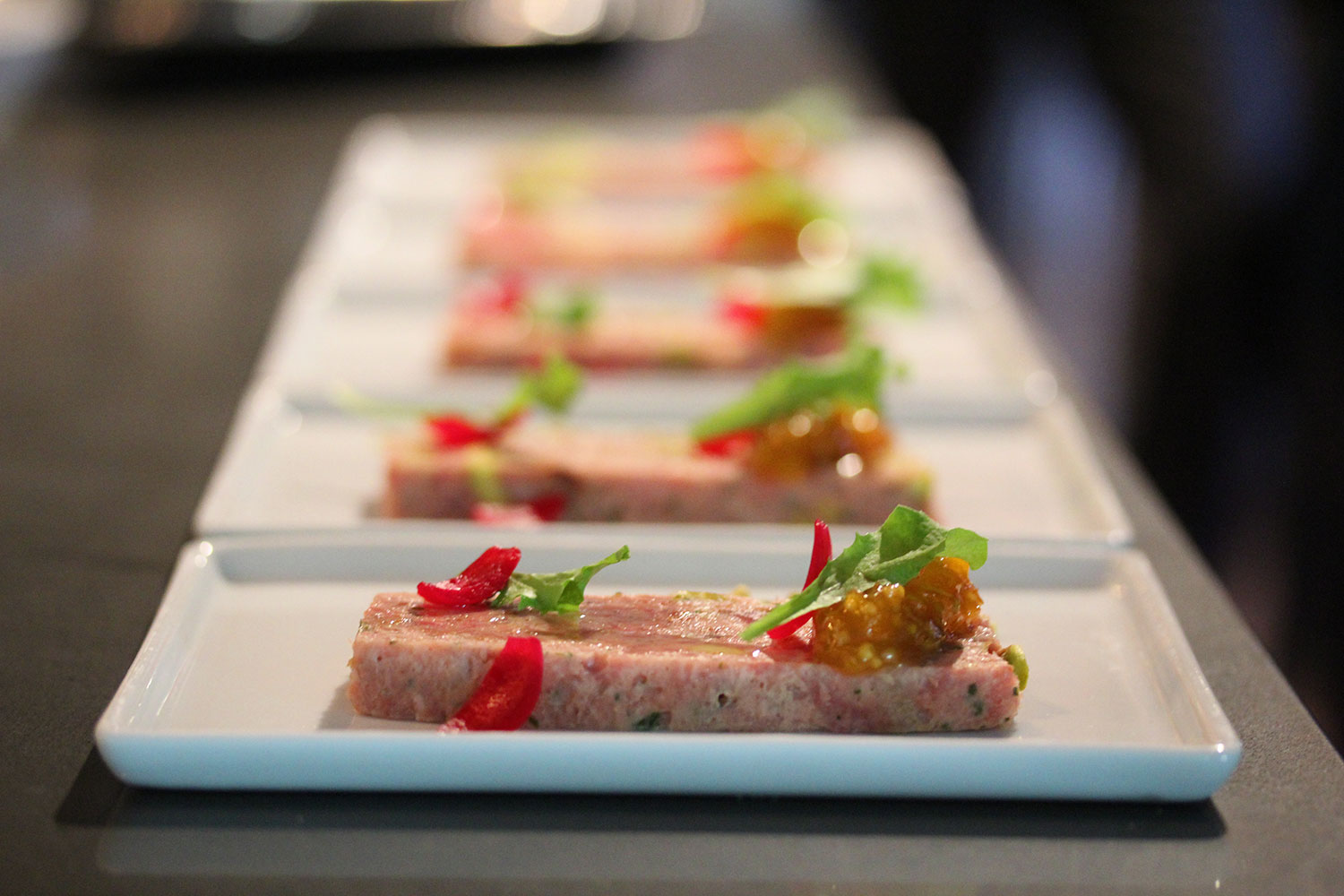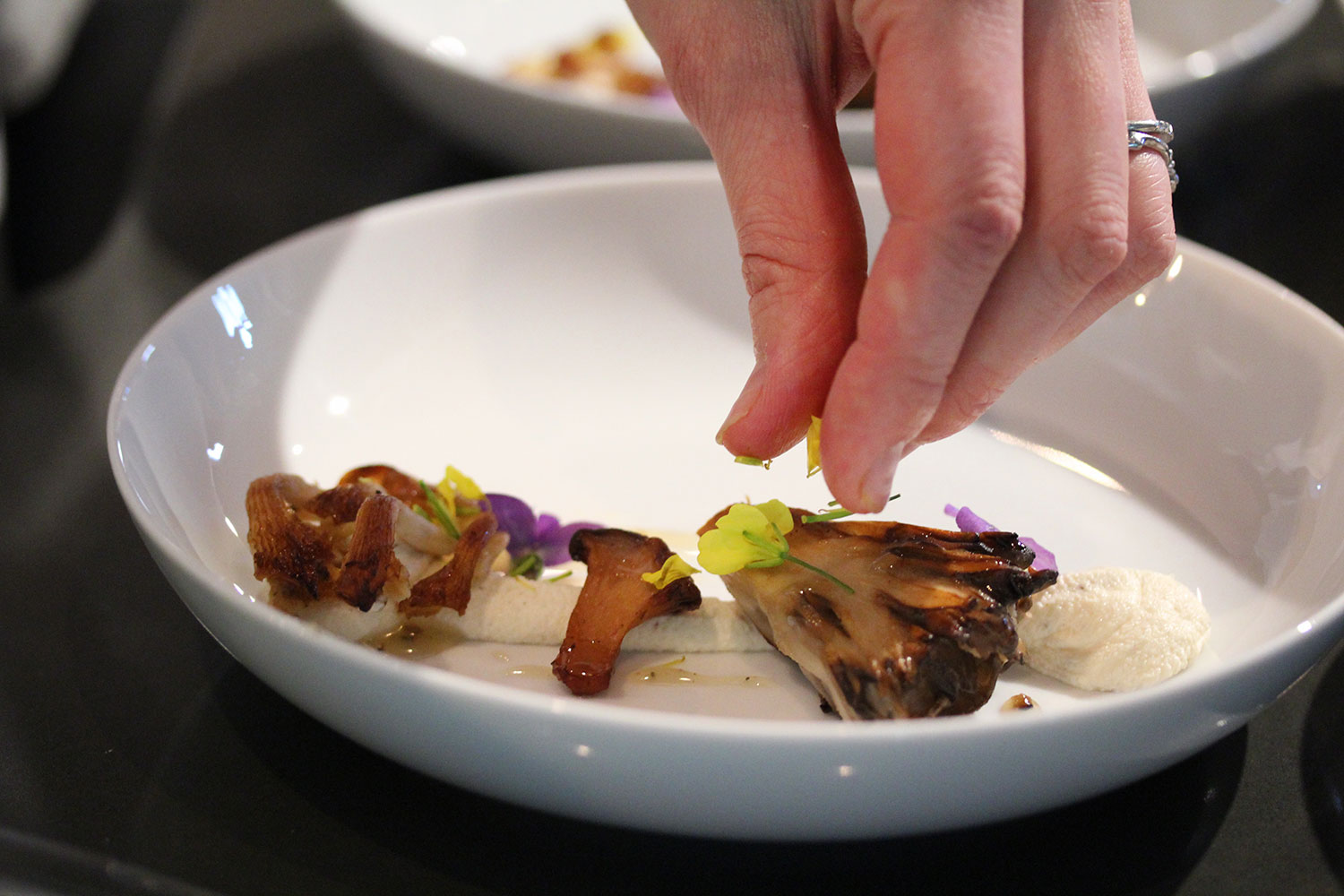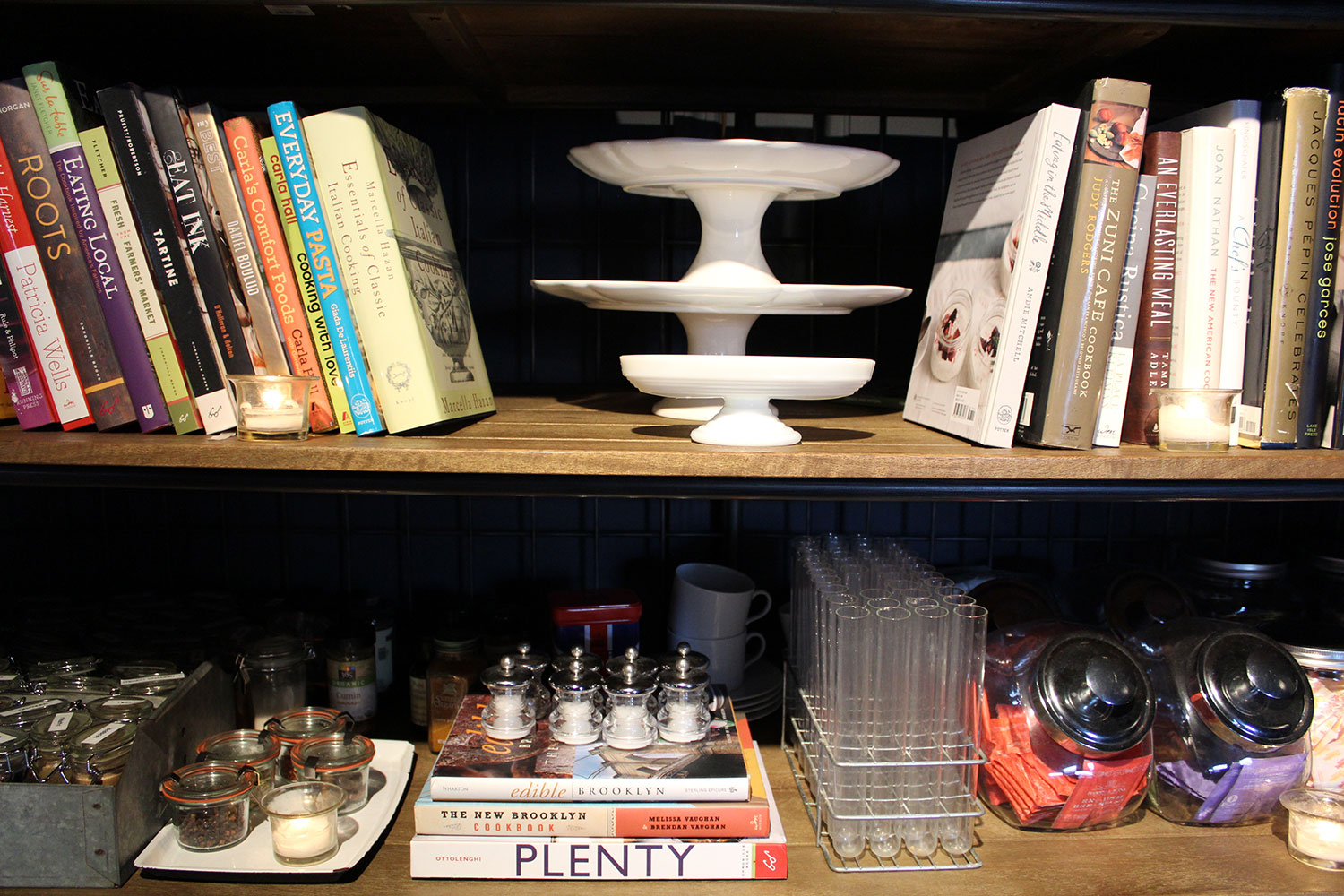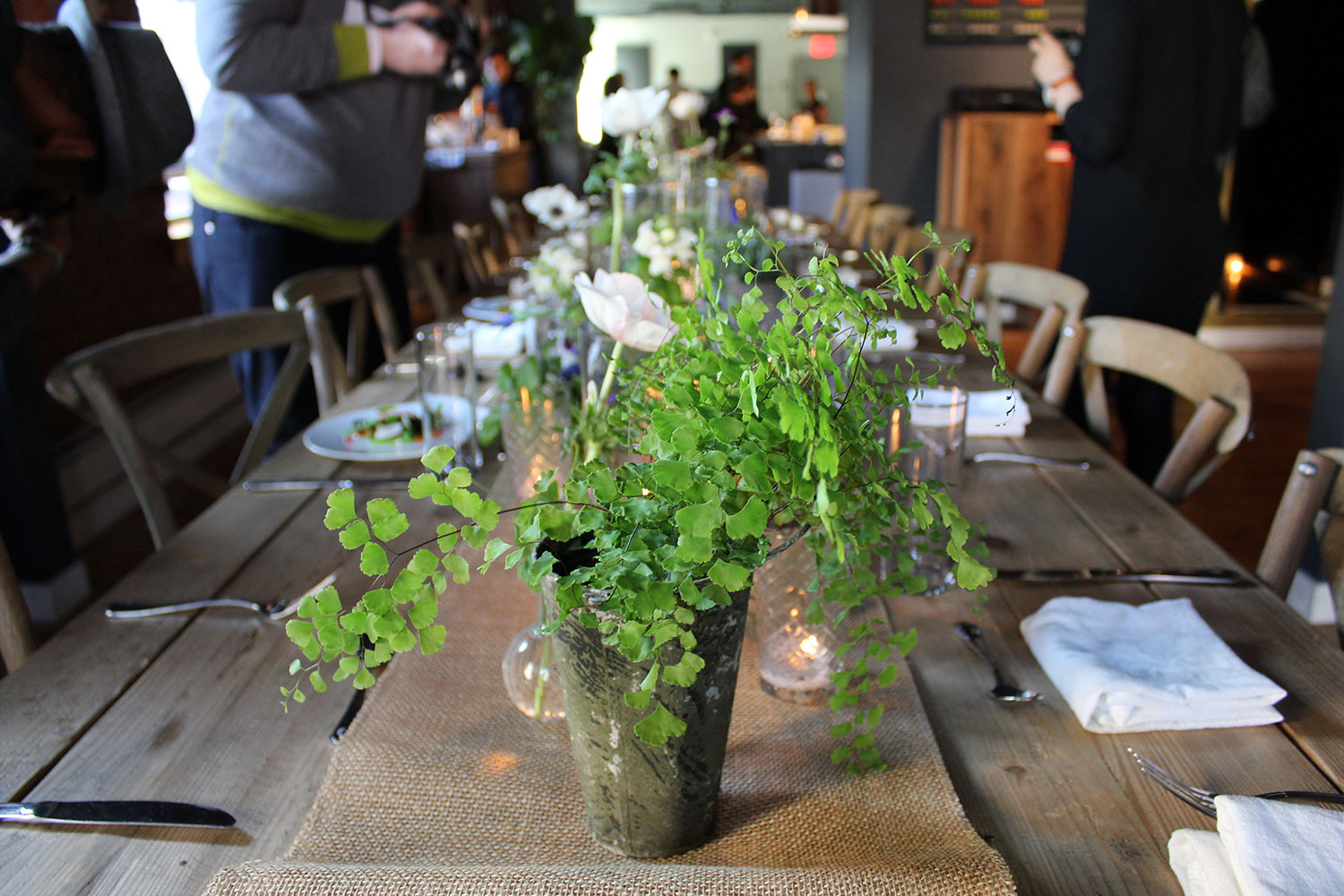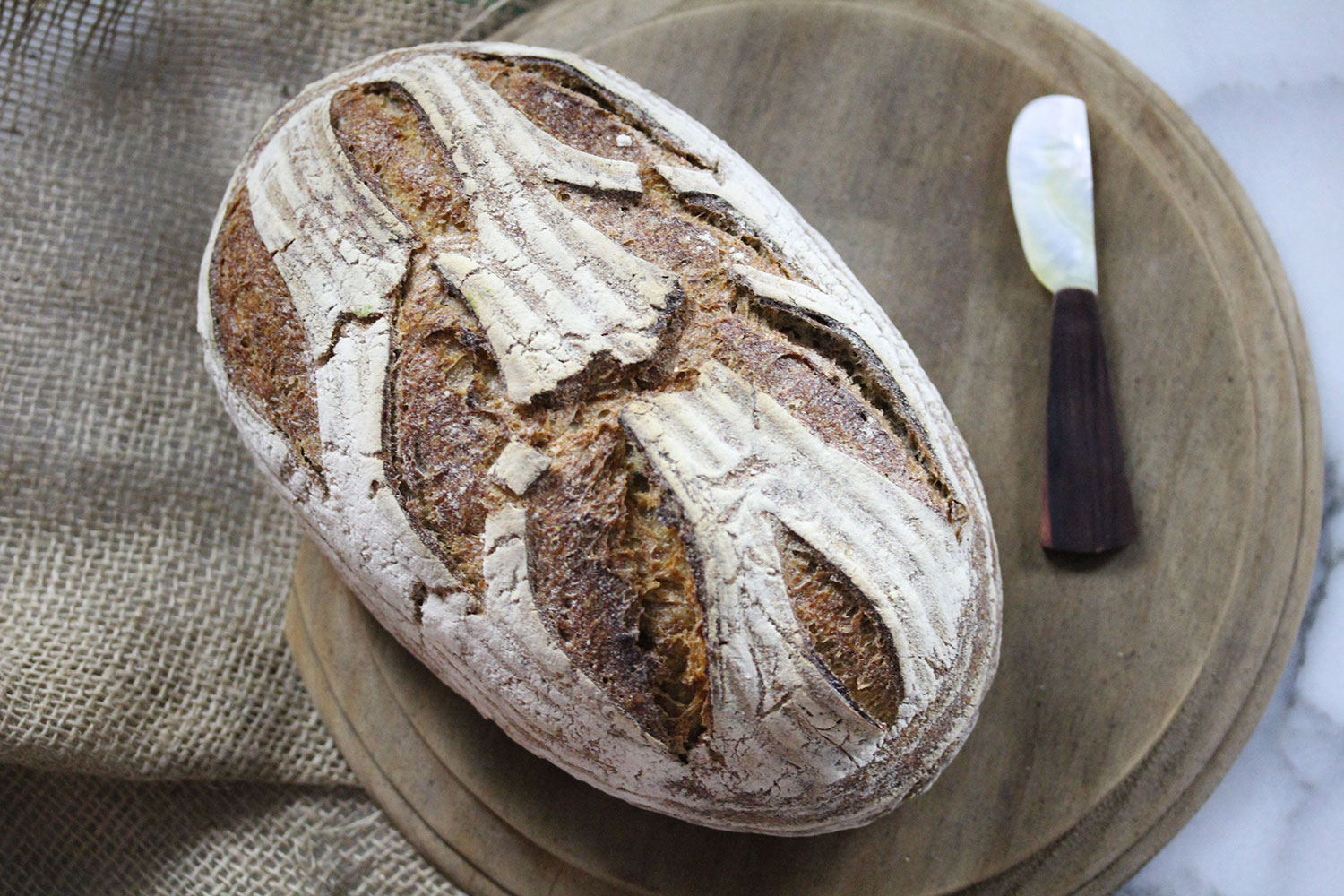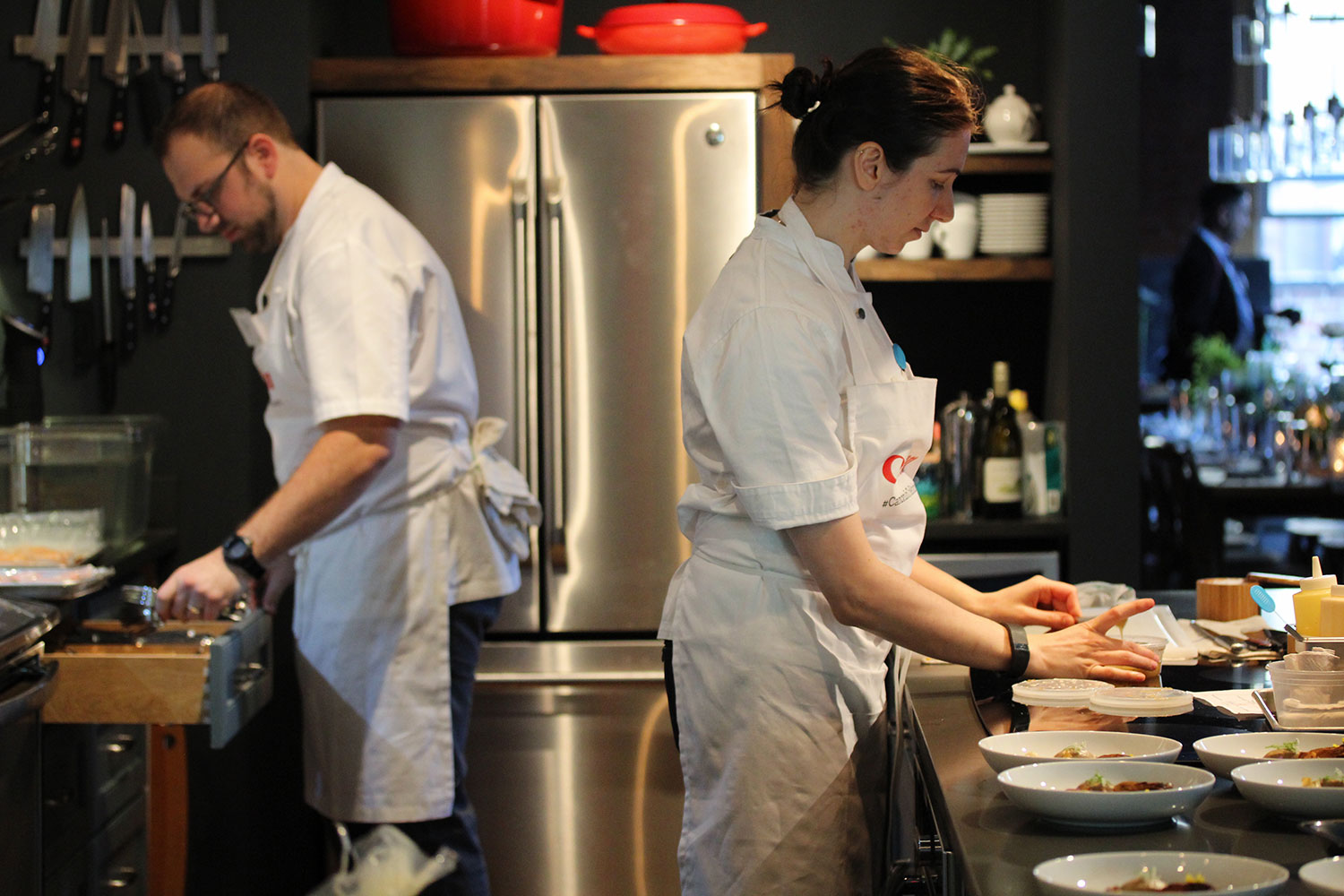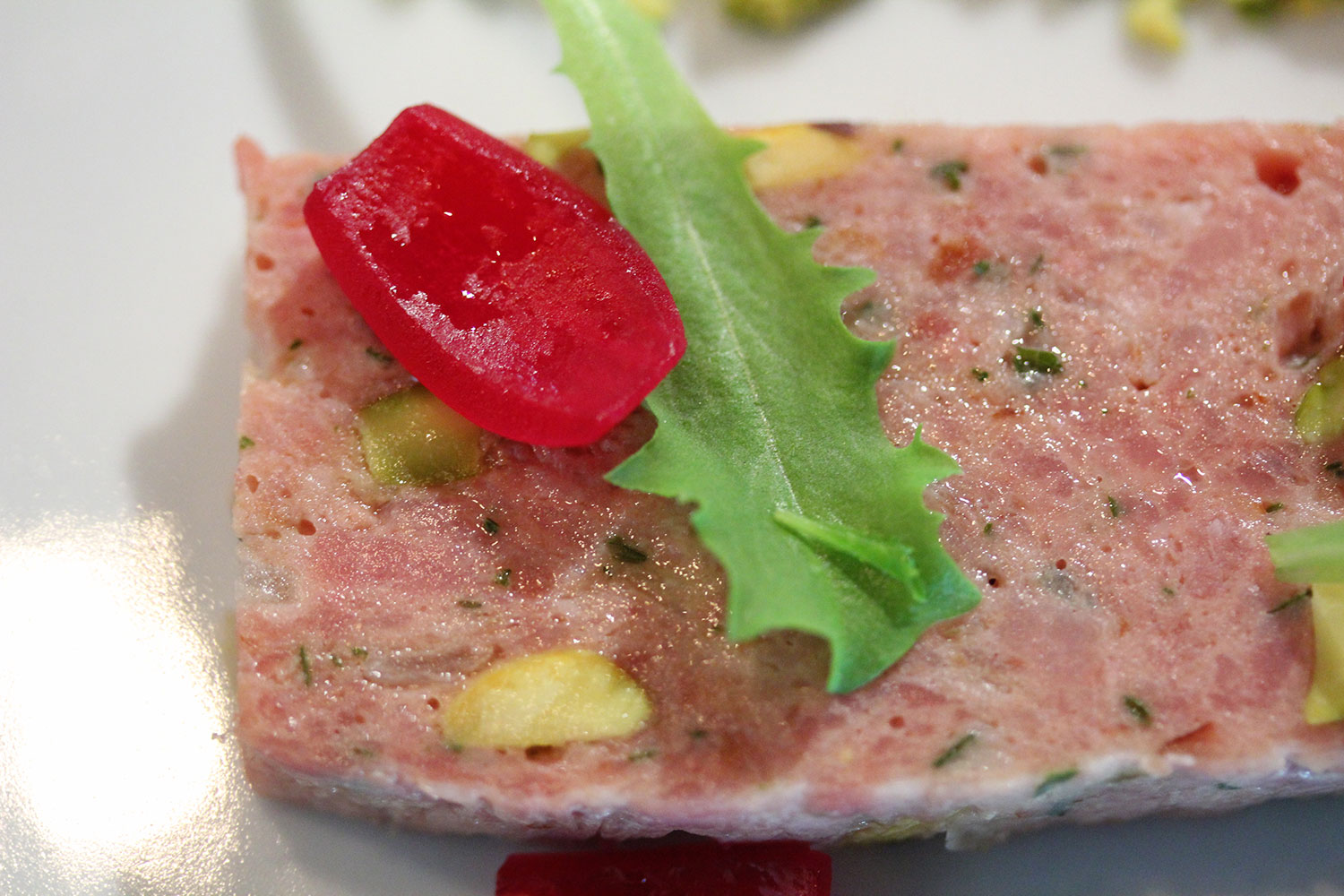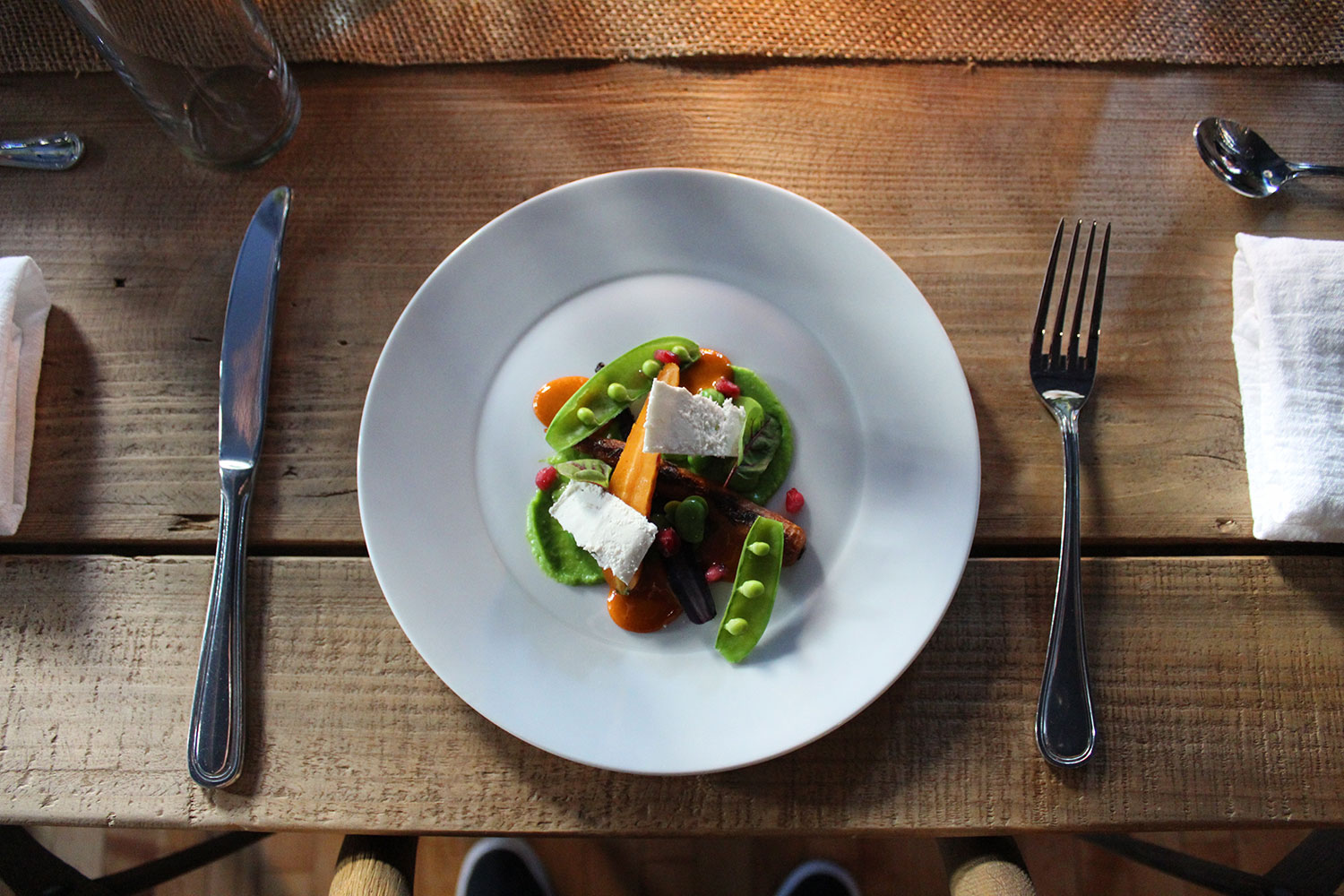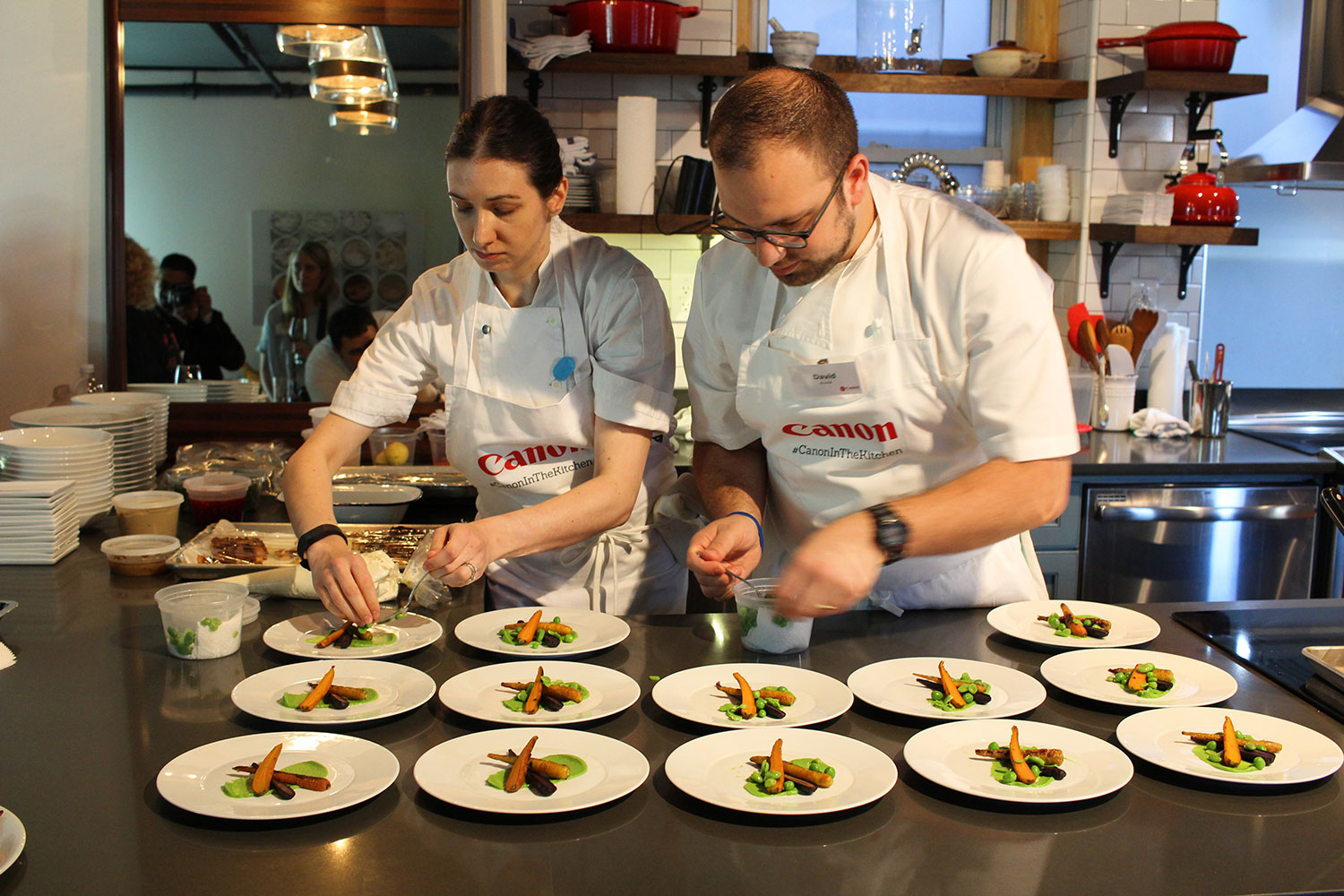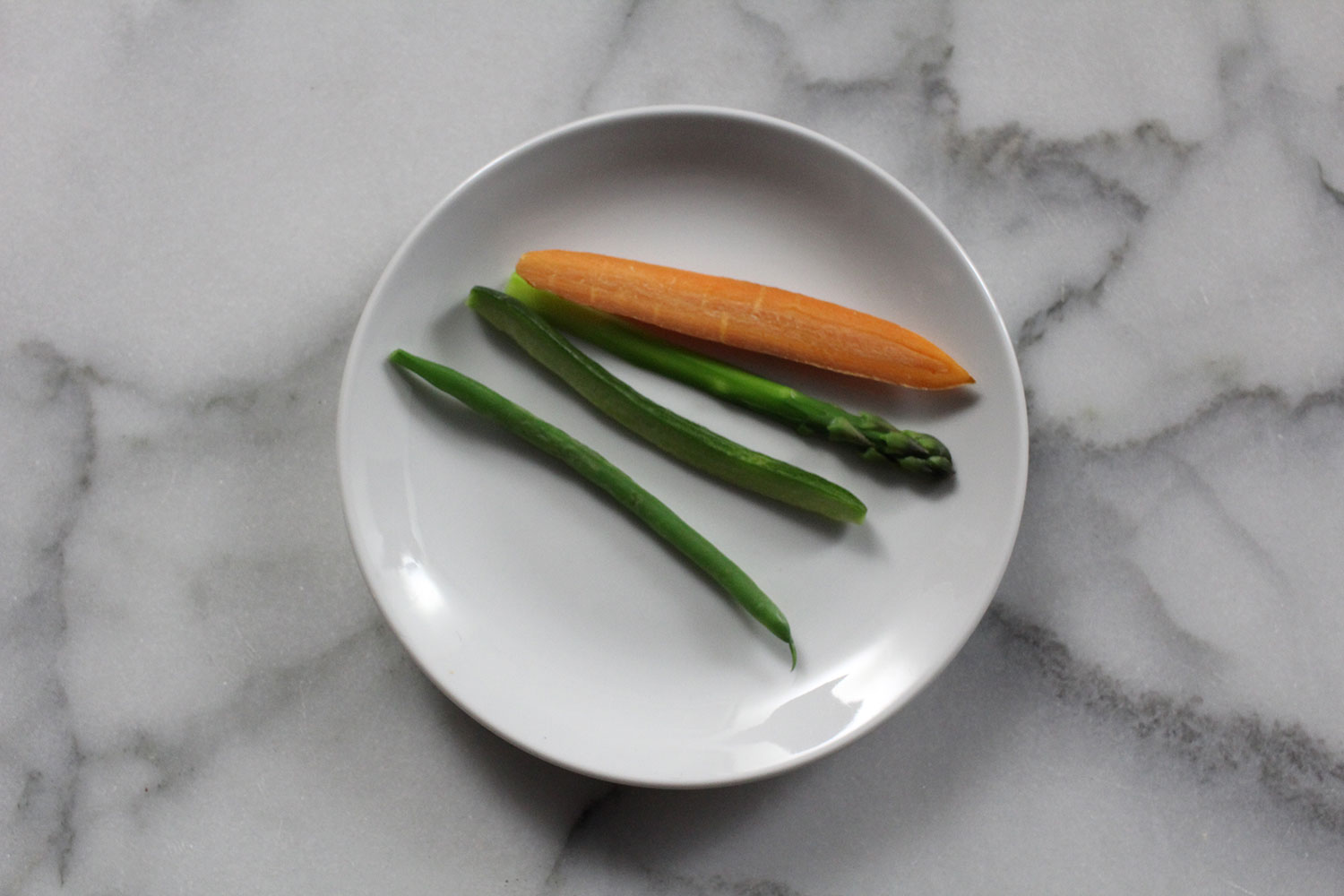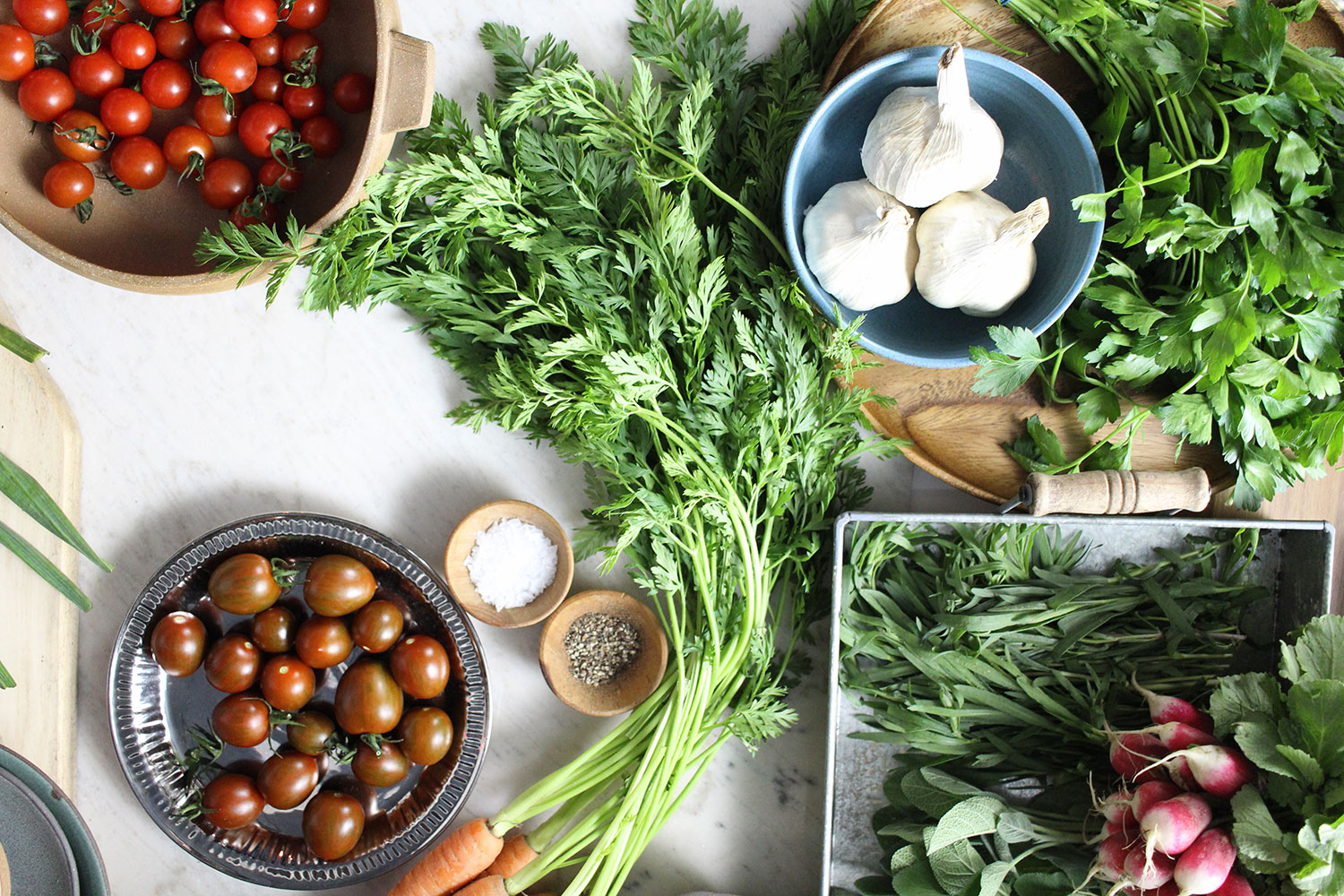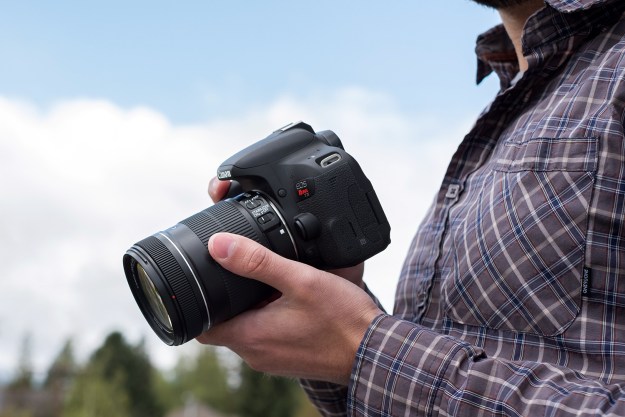Whether you call it babies and broccoli or toddlers and tortellini, two topics clearly dominate the photography feeds of our friends: family and food. So it’s no wonder camera giant Canon is taking steps to help our food photos shine.
Canon’s new Rebel T6 is the company’s newest budget DSLR, with a retail price of $550 with starter lens. We had an opportunity to try out the camera during a Canon event focusing on food photography, where we used it to shoot various stylized setups of vegetables, artful dishes, and chefs at work. The event was to highlight the T6’s new Food shooting mode, but before we get to that, let’s talk a bit about the camera.
The T6’s performance is comparable to the EOS Rebel T5, Canon told us. That’s not surprising since both cameras are nearly identical, using the same 18-megapixel APS-C sensor and body style (dimensions of the mostly plastic body are off by an extra few millimeters, and it’s an ounce heavier – barely noticeable). Like the T5, the T6 is a compact DSLR that’s comfortable to hold (unless you have particularly large hands). With the included EF-S 18-55mm IS II basic kit lens (the same one the T5 uses), the T6 feels light for a DSLR.
Because the T6 is so similar to the T5, you can read our T5 review to get an idea of performance. In our hands-on time with the T6, we found the experience to be the same and image quality equal, which is generally good for an entry-level DSLR – just don’t push it too hard and expect 80D results.
Canon upgraded the image processor from the Digic 4 to the Digic 4+, which is already a few generations behind; T6 users will find performance improvements negligible over the T5. The LCD resolution did get a boost from 460,000 pixels to 920,000. Video capture, unfortunately, is stuck at Full HD 1080 at 30p.
But those facts are merely an amuse bouche to get you started. Let’s look at two of the T6’s new features: Food mode and Wi-Fi/NFC.
Whetting your appetite
The new Food mode – a selectable option on the mode dial – is an indication of the type of user Canon built the T6 for: casual photographers stepping up from a point-and-shoot or even a smartphone. Food modes aren’t new, as they can often be found in scene (presets) mode menus. But Canon has given it a dedicated spot on the mode dial at the top of the camera, designated by a fork-and-knife symbol, alongside classics like Portrait, Night Portrait, Macro (Close-up), Sports, and Landscape.
The mode addresses a popular trend in casual photography. According to Canon’s research, 55 percent of 1,000 people it surveyed said they take and share photos of food, while 41 percent said they want to improve their food photography. But you don’t need Canon’s research to see how popular this trend is: Punch in “#food,” “#foodphotography,” “#foodporn,” or any variation of the word “food” into Instagram, and you’ll find millions of photos.
The new food mode addresses a popular trend in casual photography.
The idea here is that the user doesn’t want to (or know how to) adjust settings like white balance. Food mode attempts to auto-correct the scene before you shoot it, and you can preview it in live view mode on the LCD. Switching between Food and other modes, like Program or Aperture Priority, you can see the difference, as the Food mode tends to cool things down.
Compared to similar shots we took with an iPhone 6S, the T6 provided a bit better color saturation, although subjectively, there wasn’t a big difference. But we had access to various Canon EF-S lenses, from wide-angle to macro, so we were able to get a bit more creative with how we shot – the benefit to using an interchangeable lens camera.
Using this mode, we created some nice looking images that look great when shared on social media or printed in small-to-medium sizes – something out of a magazine or cookbook. Color reproduction was good, and some photos had nice bokeh. At full size, the images weren’t as sharp, but we were in a low-light indoor environment and handholding the camera the whole time. We were also using Canon’s affordable but low-end lenses, so that could have contributed to the issues. Proper lighting, a tripod, and better lenses would have helped.
Overall, the T6’s performance and image quality is good enough for everyday shooting.
Getting connected
The T6 has Wi-Fi/NFC, which lets you pair the camera with a smartphone or tablet for remote operation, sharing to social media, or printing the photos to a Canon printer. Although Canon’s Wi-Fi has improved with recent new cameras, the T6’s feels sloppy. There’s no dedicated Wi-Fi button to take you to a menu, and it seems the only way to enable the function is to cycle through various menus (the LCD has no touch capability, so it can take a while).
Once you’ve successfully paired with a smartphone, you can review the photos you have taken, or adjust select settings for remote shooting. The Canon Camera Connect also provides a live view image, but we experienced significant lag. It felt like we were using Canon’s early Wi-Fi implementation again.
First impressions
The T6 doesn’t bring anything revolutionary to Canon’s budget DSLR series; in some sense, it’s a rebadged T5. For its target user, it’s a fine camera that’s capable of shooting nice images, and it’s an affordable entry into the ILC market. The T5 is Canon’s best-selling DSLR, so we expect the T6 to continue that success.
With that said, if you can do without Wi-Fi or Food mode, you can get the T5 for less money; these modes are helpful, but not essential. If your budget allows, you may want to invest in a strong second lens that will graduate with you to the next DSLR, or consider the Rebel T6i DSLR, which offers better performance and features for about $200 more.
Buy on Amazon Buy on Best Buy Buy on Canon
Editors' Recommendations
- Debunked: Canon is not recalling or delaying shipments of the EOS R5
- Canon EOS R5 will be a video beast, with 8K RAW, 4K at 120 fps
- The Canon EOS Rebel T8i brings 4K to a $750 budget DSLR
- Canon EOS-1D X Mark III brings stunning stills and RAW video to an impressive DSLR
- Nikon Z 50 vs. Canon EOS M6 Mark II: Nikon’s newest takes on Canon’s champ


